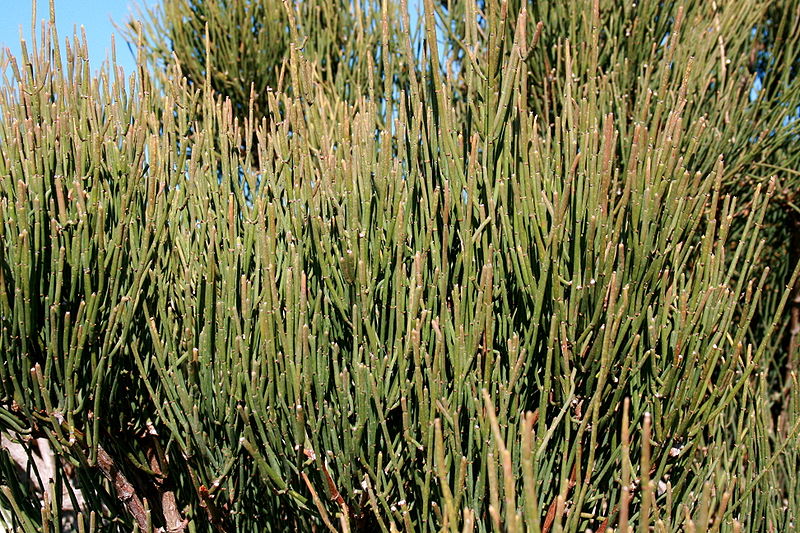Facts for Kids
Ephedra is a genus of gymnosperm shrubs known for their unique jointed stems and importance in traditional medicine and modern science.
Overview
Ecological Role
Conservation Status
Modern Applications
Research And Studies
Physical Characteristics
Geographical Distribution
Taxonomy And Classification
Uses In Traditional Medicine
Controversies And Legal Status

Inside this Article
South America
Breathing
Medicine
Kingdom
Erosion
Debate
People
Nature
Health
Are
Did you know?
🌱 There are about 50 different types of Ephedra plants around the world!
🌿 Ephedra belongs to a family called Ephedraceae, which includes many unique species.
🪴 Most Ephedra plants grow in dry, rocky places where they can survive tough conditions.
🌍 You can find Ephedra in deserts across North America, Asia, and parts of South America.
🌳 Ephedra plants have jointed stems that can be either green or gray, making them quite distinctive.
🌼 While they can produce small yellow flowers, the flowers are not very noticeable.
🧪 Ephedra sinica is commonly used in traditional medicine, especially in Chinese herbal teas.
🔍 The plant contains a substance called ephedrine, which is helpful for certain breathing problems.
📊 Researchers are studying Ephedra to discover new ways to safely use its properties.
🌍 Some species of Ephedra are endangered due to habitat loss from farming and urbanization.
Introduction
There are about 50 different kinds of Ephedra found all over the world! Most of these plants are green shrubs that grow in dry, rocky places. They are well-known for their unique jointed stems, which can be green or gray. Some types can even grow up to 2 meters tall! 🌱
Ephedra has been used for thousands of years and is important in both traditional medicine and modern science.
Ecological Role
It provides food for various animals, including birds and insects. The small seeds are a tasty snack for many creatures, helping to spread the plant around. Additionally, Ephedra plants support soil health by preventing erosion. 🌍
They help retain moisture in dry environments, which makes it easier for other plants to grow nearby. By providing shelter and food, Ephedra helps create a balanced ecosystem!
Conservation Status
Habitat loss due to agriculture and urbanization is a concern. Some plants may be endangered in specific areas. Protecting these unique plants is important because they support various ecosystems! 🌱
Efforts are underway to study their populations and create plans for conservation. Organizations and researchers are working together to keep Ephedra thriving in nature. 🌍
Modern Applications
️ Scientists have discovered that the plant contains a substance called ephedrine, which helps treat breathing conditions and low blood pressure. It’s important for companies to extract this from the plant for safe use. 💊
However, some products containing high amounts of ephedrine have been banned because they can be harmful. Researchers continue to study Ephedra to find new, safe ways to use it!
Research And Studies
They are studying how it works in the body and its effects on health. They are also looking into its potential benefits for athletes and fitness enthusiasts. 🏃
♂️ Some research explores how it might help with weight loss, though this is controversial. By studying Ephedra, researchers aim to use its properties in safe and effective ways!
Physical Characteristics
They have green, jointed stems instead of regular leaves. These stems can be thin or thick, depending on the type. Some have tiny scale-like leaves that help them keep water. 🌊
The plants can produce small, yellow flowers, which are not very noticeable. After flowering, they produce small seeds that often fall to the ground. Their unique appearance helps them survive in tough environments, making them special plants!
Geographical Distribution
They live in places like the deserts of North America, Asia, and even parts of South America. In the United States, you might find them in the Southwestern deserts like Nevada and California. These plants love rocky, dry places with lots of sunshine ☀️. Some species thrive in high-altitude mountains, while others enjoy the hot desert sands. This wide range makes Ephedra an adaptable plant!
Taxonomy And Classification
It falls in the plant kingdom (Plantae), which includes all plants! Inside this family, Ephedra is divided into different species, such as Ephedra sinica and Ephedra nevadensis. Each species has its own special qualities, making them unique. For example, Ephedra sinica is the most commonly used type in traditional medicines! 🔍
Scientists study Ephedra to understand its properties and how it fits into the plant world.
Uses In Traditional Medicine
In China, the plant Ephedra sinica is often made into a tea called Ma Huang. This tea can help with breathing problems like asthma, as it opens the airways. 🫁
Native Americans have also used Ephedra for various health purposes. It's been known to help with fevers and coughs too! However, it’s essential to use these plants carefully because they can have strong effects.
Controversies And Legal Status
Some people abused products containing high doses of ephedrine, leading to serious health issues. Due to this, the U.S. Food and Drug Administration (FDA) banned dietary supplements containing Ephedra in the early 2000s. 🌐
This means that while it can be used in medicine, it must be carefully regulated to keep people safe from harmful effects!

